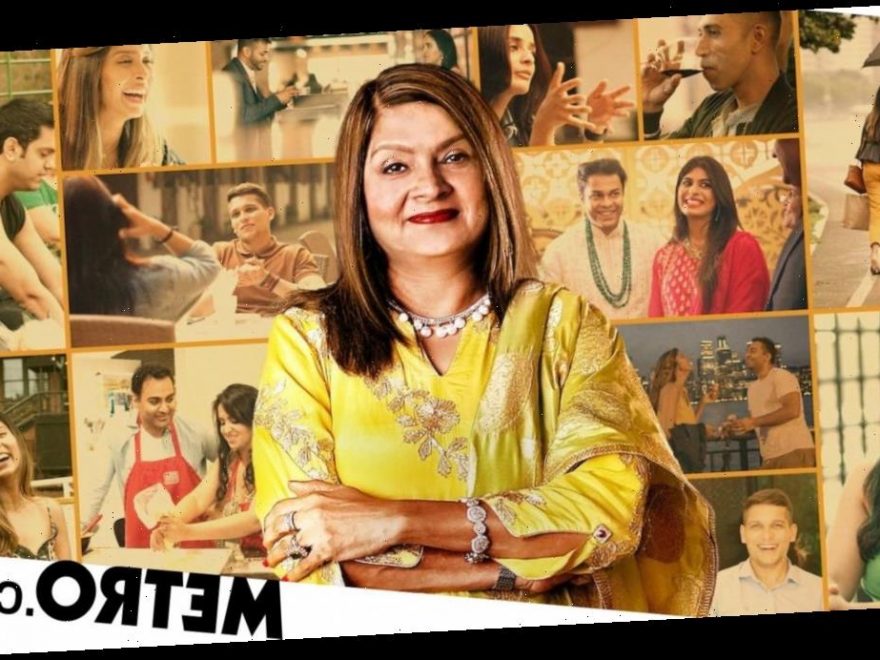When I first saw the trailer for Indian Matchmaking, I cringed. It was everything that’s wrong with India’s marriage obsession: unchecked and subsequently glorified.
But being an Indian woman, and rarely seeing myself represented on the small screen in dating show contexts, I knew I had to watch it as soon as it aired.
My expectations were low, but somehow I was still disappointed. In its eight episodes, Sima Taparia – the matchmaker – and producer/director Smriti Mundhra provided an extremely narrow portrayal of what it means to be looking for love as an Indian person today.
The series follows Taparia as she meets with clients including Akshay, Pradhyuman and Ankita, finds out what they want, and aims to set them up with their perfect match.
But while Taparia flits between the US and India, her understanding of young Indians hoping to find love and settle down does not change. It feels like the show’s takeaway is that only upper class and upper caste straight singles are the ones worthy of love, because this is all we see.
Within the first five minutes, Taparia says ‘In India, we have to see the caste, we have to see the height, we have to see the age’. When matching Nadia, a Guyanese-Indian living in the States, Taparia emphasises how ‘difficult’ it is to find a match for ‘a Guyanese’.
That’s not to say Indian Matchmaking is entirely removed from real life – classism, casteism and colourism (the idea that someone’s skin colour makes them more or less valuable as a human being) is common in India and in pockets of the Indian diaspora.
But rather than point out that the caste system (which ranks Hindus and non-Hindus through a hierarchical structure) is, in theory, abolished but still holds sway, the show sidesteps it entirely.

In its place, there is veiled language. For example, when talking about compatibility, client Pradhyuman insists that ‘the family has to be matching together and of the same wavelength’– code for ‘within my class and caste’.
This is what bothered me the most. Why doesn’t the show take the time to note these nuances or, better yet, ask Taparia and her clients why they’re still entertaining them in 2020?
It’s a similar case when it comes to addressing Hindu patriarchy. We have Akshay, who wants to uphold gendered roles with his choice of wife. In response to his match’s wish to continue working after marriage, he says ‘If she’s busy with her work, who’s going to look after the kids?’
Ashkay’s ideal woman is his mum, who has internalised these patriarchal values, insisting that her son’s future wife be ‘flexible’ and maintain the house in the way her son is used to. She claims her blood pressure will be through the roof until her son finds an appropriate match who she approves of.
On the other hand, we see Taparia constantly telling her female clients they are being too demanding in their lists of what they want in a partner. She makes it clear that they are the ones who need to adjust to make their matches more compatible. In that, the roles of men and women are set.
Ankita, an independent woman who was sure of herself, was brushed aside by Tapari and Geeta, another matchmaker, for that very reason.
After her match didn’t work out, her storyline felt secondary: it moved from Ankita, a woman looking for love, to Ankita, a woman with different priorities. Why wouldn’t you take the time to focus on how a modern Indian woman is self-partnered in a show that otherwise centres on happy endings?
The show also treats us to fatphobia, ageism and shame surrounding divorce.
Given how curated the characters seemed (the playboy, the momma’s boy, the divorcee), it would have made sense to portray some people in India who had successful matches but weren’t reliant on stereotypes.
By not questioning the problematic elements this exposes in Indian society, it drives home these warped ideas.
Indian Matchmaking, to me, sends the message that as an Indian woman you have an expiration date, a duty to your husband, that you’re too fat, your career is not important and that money and class are everything. Your worth as a woman is directly related to whether you are in a relationship or not.
If the producer of Netflix had taken the time to explore why these values exist and attempted to challenge them, it could have been educational in promoting some much-needed conversations, particularly with the generations of women who have internalised these values.
Instead, we get used to hearing Taparia say that someone ‘slim’ and ‘fair’ will be easier to match. And that’s that.
I know a hundred aunties like her. They constantly dole out advice and think I’m the crazy one when I explain the trouble with their idea of marriage and that it’s a patriarchal construct. I’ve been told I’m offensive when I say that I don’t want to look for a life partner.
When I ask them why they became mothers, or why they got married, only a few have had a good answer beyond, ‘that’s just how it’s done’.
Indian Matchmaking could have helped explain why that’s the case, and what should change. But it leaves a lot to be desired.
What could’ve been an interesting insight into the mindsets behind Indian marriages left me reeling.
Was this the best they could do, really?
Source: Read Full Article
